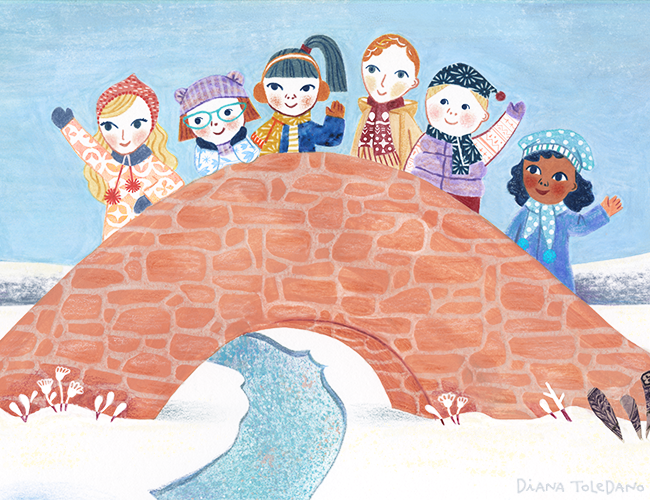••• This post is part of the #KidLitWomen project. We're celebrating Women's History month with 31 days of posts focused on improving the climate for social and gender equality in the children’s and teens’ literature community. •••
We illustrators have a mighty important role: we shape worlds.
When kids open our books, they step into our worlds and go off to live adventures. If we are lucky and create a compelling enough world (with the help of authors, publishers, designers, etc.), a kid will visit it again, and again, and again.
I didn't realize back then (7 years ago), but my first book was not very diverse. Luckily I have gotten a lot better about it! The protagonists of my last three books were a kid with a disability, a mixed race family, and two siblings of ambiguous race.
So, are your books diverse enough? If your answer is no, do not despair... You have a chance to do better with the next one. We all do. Here are some questions to get you started:
Who is your protagonist?
Don't always relegate girls, people of color and other minorities to the background. Kids deserve to see themselves as the hero!
Does your work reflect your friends, your neighbors and your family?
Make sure your friends are present in your illustrations, especially those who usually are underrepresented. For example, the author of the picture book Une place pour Edouard wrote a beautiful story about special new baby with some health problems, and I drew him in a wheelchair because I thought of a darling family friend with cerebral palsy.
Does your work ONLY reflect your friends, your neighbors and your family?
The world is a big place! If you only illustrate the reality that you see, you are missing many interesting people, places and things. Research can help you with this (plus is pretty fun!).
Does everyone you draw look the same?
There are infinite body shapes. Different is beautiful! Tall, short, skinny, chubby, disabled, nearsighted, big eared, freckled skin, wrinkled... Let's show kids that they can celebrate themselves and celebrate each other.
How many of your characters are boys?
Whenever the gender of a character is up to you, take a moment before deciding... Do you always default to male characters? Unfortunately most authors and illustrators do. Give girls, transgender and non-binary kids a chance.
Why is your character THAT way?
The best way to avoid stereotypes is to ask ourselves plenty of questions. For example, a manuscript describes a family trip: who drives and why?, who sits on the passenger side?, who is quietly reading a book?, who is throwing a tantrum?, who's playing with a unicorn toy? Look for your hidden biases (we all have them). Boys can like unicorns, girls can be rowdy.
It's important not to trivialize this issue. If your book features six friends, you don't have to draw every one of them with a different skin tone... Life rarely works this way. Making inclusive books requires us to dig deeper. There are many ways to show diversity: race, gender, religion, cultural heritage, sexual orientation, language, age, etc.
Do you have any strategies to make sure your work is diverse and inclusive? Please leave them in the comments!
Most of the images in this post belong to my upcoming books Polly Diamond and the Magic Book (written by Alice Kuipers, coming out this May) and One Snowy Day (written by Diana Murray, coming out this autumn)
For other articles and discussions on equality in children’s literature visit: KidLitWomen






